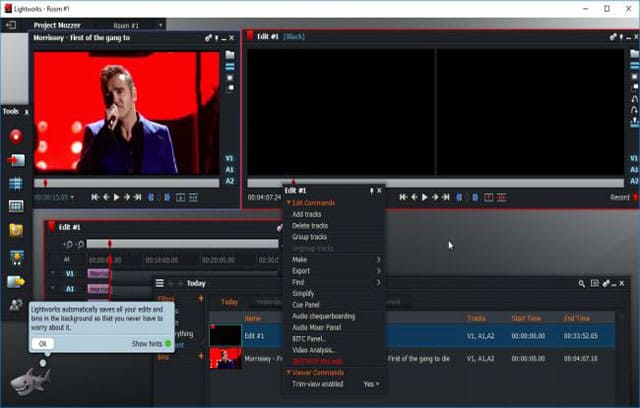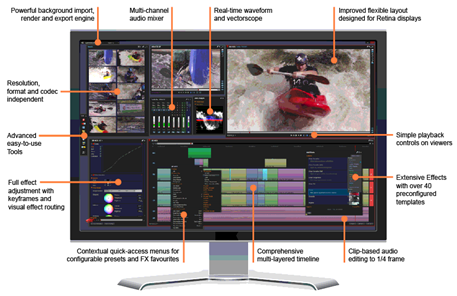

It’s not as effortless as it could be, but on the plus side, you can create visually interesting transitions. You then have to access the ‘Graph’ section to alter its duration (essentially making keyframes for the transition). Next, Lightworks treats transitions like any other effect, and applies it over the entire length of a chosen clip. To start with, you need to add the transition to the clip that’s above another one. It can be a little tricky to find your way around, and for us the most confusing aspect was the transitions. You select an effect, drag it onto a clip, alter its parameters (including the ability to have them change over time thanks to keyframing), and you’re done. It’s powerful and easy (Image credit: Lightworks) This may not sound like a big deal until you realise that you increase the potential for mistakenly overwriting audio which you’d then have to source again, wasting a lot of precious time.įind an effect you like, drag it onto a clip and then alter its parameter. Moving a video clip to another layer will also not automatically move the audio to other layers, even though the audio and video are linked.

Not so with Lightworks: put a video in V2, its audio goes to A1 and A2, thereby potentially overwriting any audio already there that belongs to a clip on V1. Were you to put a video on V2, its audio would automatically go to A3 and A4. In other editing software, adding a video on layer V1, would add the audio in layers A1 and A2 (for stereo sound). This is definitely something that needs practice to perfect.Īlthough you can work with multiple layers of audio and video, it’s not all sunshine and daffodils. Innovative though this is, it can get tricky, especially when working with multiple layers and multiple handles across multiple clips get automatically selected.

If you highlight both the left and right handles of a clip, its position in the timeline and duration remains the same, but as you drag left or right, you move its in and out points in relation to the original clip, ie, you’re changing the part of the clip you’re using. You can then drag them left or right to alter the edit point, or the gap between two clips depending on what you selected. Select any of them by clicking on them - turning the handle yellow. The highlighted portion is either on the internal or external side of that end.

Hover over clips and handles appear at either end of them - depending where the cursor is positioned. There are a few features that made us stand up and take notice (both good and bad), some of which we’d like to chat about here: You have multiple layers, can preview clips, set in and out points, the works. Titles are in the VFX workspace, and are fully customisable (Image credit: Lightworks) Editingīuilding an edit is pretty much as you’d expect from a professional level video editor.


 0 kommentar(er)
0 kommentar(er)
